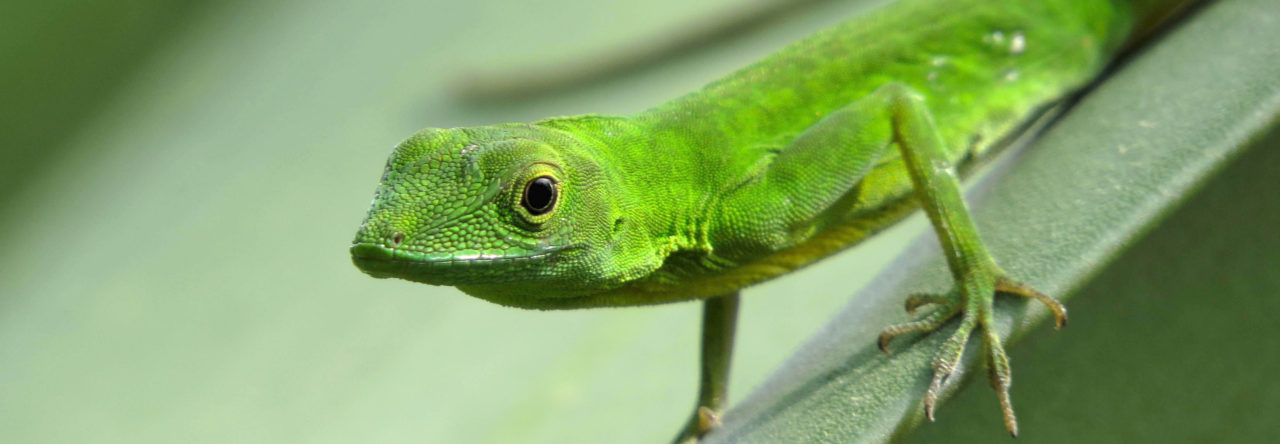Two years ago, Castañeda and de Queiroz published a phylogeny of Dactyloa clade anoles based on molecular data for 40 species, approximately half of the clade. It was far and away the best phylogenetic work published on the clade and brought sense to a previously not well understood part of the anole world. The study revealed the existence of six geographically coherent clades and had important implications for our understanding of morphological evolution in this clade, which contains the mainland giants.
Recently, Castañeda and de Queiroz have published a follow up study in which they add morphological data for 60 species (the original 40 plus 20 more). The paper is published in the Bulletin of the Museum of Comparative Zoology and, like all MCZ publications, is freely available for download (click on Breviora or BMCZ on the left hand of the page). We’ve already previously discussed one aspect of the paper, a note added in press critiquing the Nicholson et al. proposal to split Anolis into eight genera.
The main focus of the paper, however, is to ask whether adding morphology increases the resolution or changes the story of the phylogeny based on molecular data. And the answer is: no, it doesn’t. As found in previous studies, morphology on its own does not provide a coherent picture of anole relationships, nor does it seem to substantially change the results derived from the much more informative molecular data. However, morphology certainly has one advantage–it allows us to add in taxa for which no molecular data are available.
The paper’s abstract gives much more detail and, of course, you should check out the paper itself.
ABSTRACT. We present a phylogenetic analysis of the Dactyloa clade of Anolis lizards, based on morphological (66 characters of external morphology and osteology) and molecular (4,700 bases of mitochondrial and nuclear DNA) data. Our set of morphological characters includes some that exhibit continuous variation and others that exhibit polymorphism within species; we explored different coding methods for these classes of characters. We performed parsimony and Bayesian analyses on morphology-only and combined data sets. Additionally, we explicitly tested hypotheses of monophyly of: 1) Dactyloa including Phenacosaurus, 2) Dactyloa excluding Phenacosaurus (as traditionally circumscribed), 3) taxa previously ranked as series or species groups described based on morphological characters, and 4) clades inferred from molecular data. The morphological data alone did not yield Dactyloa or any of the previously recognized series described based on morphological characters; only the Phenacosaurus clade (as delimited based on molecular data) was inferred with the morphological data, and only in the parsimony analysis. In contrast, Dactyloa was inferred as monophyletic with the combined data set, although topology tests failed to reject the hypothesis of non-monophyly. Additionally, five clades inferred based on molecular data (eastern, latifrons, Phenacosaurus, roquet, and western) were inferred with the combined data sets with variable support and including additional species for which molecular data were not available and which have geographic distributions that conform to those of the clades in which they were included. Of the previously recognized taxa based on morphological characters, only the roquet series, which corresponds in species composition to the roquet clade, was inferred with the combined data. Topology tests with the combined data set rejected the monophyly of the aequatorialis, latifrons (as traditionally circumscribed), and punctatus series but not that of the tigrinus series and Phenacosaurus (as traditionally circumscribed). Our phylogenetic analyses and topology tests indicate that a new taxonomy for Dactyloa is warranted; we therefore present a revised taxonomy based on the results our phylogenetic analyses and employing phylogenetic definitions of taxon names.

















